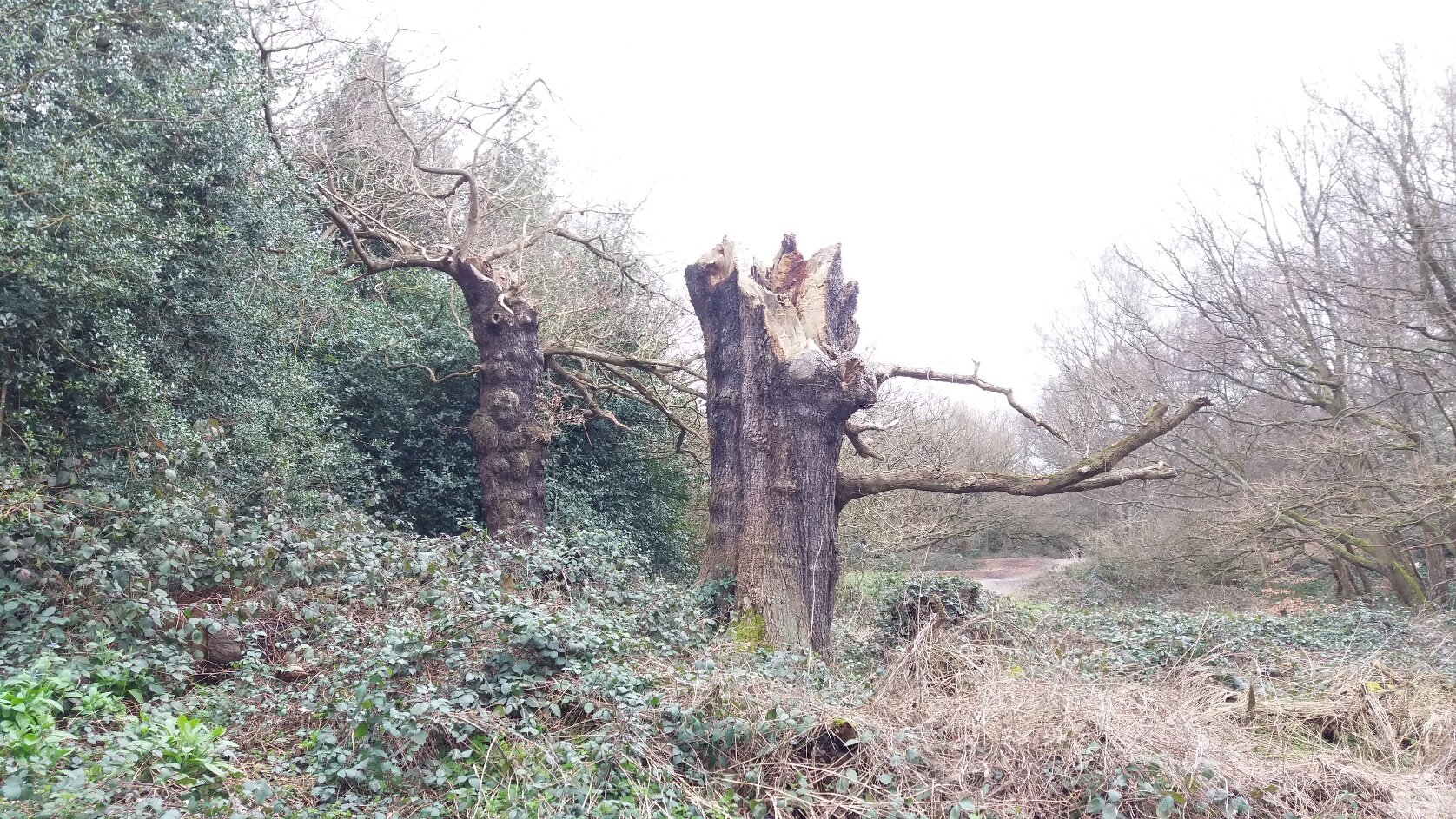Good old Oaks
By Rory Dimond
Oaks Quercus spp. are easily identified by their wavy-edged leaves, rough bark and of course their cupped acorns. The UK has two native species, the most common in the South being the Pedunculate Oak or English Oak Quercus rubor. This species dominates on Hampstead Heath and Highgate Wood, growing well on London clays. It can be distinguished from the Sessile oak Q.petraea by leaves that are almost unstalked and lobed at the base and the acorns growing from a stalk or ‘peduncle’. In Sessile oaks the opposite is true.
Oak by the Parliament Hill Bandstand ©Ceridwen
Although oaks do form woodland, they grow best in the open. Pedunculate oaks can grow 20-40m tall, with a broad trunk up to 12m in diameter and a shallow root system extending up to 7 times the width of the crown, preventing the heavy tree from toppling. A healthy oak can live for 1000 years or more. Volunteer tree surveys have estimated some of the Heath’s oaks to be around 400 years old, possibly up to 500. It is said that an oak grows for 300 years, rests for 300 and spends the last 300 gradually declining. During their decline, oaks may shrink to reduce the resources they need. A hollowing trunk and dead, protruding ‘stag’s head’ branches are natural signs of an aging oak.
Oaks support the greatest biodiversity of any British tree. Over 300 insect species rely on oaks, including the caterpillars of over 60 moth species and the Purple Hairstreak butterfly, in turn feeding birds like tits and warblers. A variety of gall wasps lay eggs in oak buds, producing round, woody Marble Galls, spongey Oak Apples and craggy Knopper Galls amongst others.
Declining or dead oaks are also important for a range of insects including Stag Beetles and the rare Rusty Click Beetle, as well as fungi like the Oakbug Milkcap, Oak Mazegill, Oak Bolete and the internationally threatened Zoned Rosette . Hollows from rotting heartwood shelter roosting bats as well as nesting Tawny Owls, Stock Doves and Kestrels.
Purple Hairstreak © Sharpphotography
Fungi on a rotting oak trunk at Kenwood
Acorns are also a boon for wildlife like Nuthatches, Jays, squirrels, small rodents and deer. Oaks and Jays even have a mutualistic relationship. The birds carry acorns away from the parent tree and bury them as winter food stores. Although many are eaten, excess acorns are effectively planted, often hidden under scrub where the sprout is protected from grazers. In a final twist, the seedling produces nutritious underground carpel leaves which the Jay seeks out in spring to feed its young, tugging the young oak up into the light as the bird collects them.
Some local oak trees are cultural focal points too. The district of Gospel Oak is named after an ancient oak that once marked the parish boundary between Hampstead and St Pancras. Before the reformation, passages were read from the Gospels under large oaks, as stopping points on traditional processions around parish boundaries. The original tree is no more, and a replacement planted by Michael Palin in Lismore Circus in 1988 unfortunately did not survive.
A pair of oaks on Sandy Heath form the landmark ‘Two Tree Hill’. Sand extraction for sandbags during the First World War left these trees standing on a raised hump in a denuded landscape. They are now surrounded by woodland, including non-native Turkey oaks Quercus ceris misguidedly by the council to restore greenery to the area.
Two-tree Hill
Along the Southern boundary of the Kenwood Estate, some much older ‘boundary oaks’ line the path providing useful way markers since at least 1227, when they were recorded in a royal charter. Despite the best efforts of the Heath’s Tree Team, the tree nearest Hampstead Gate died in 2016 although it still supports life in the form of a range of fungi and an Elder growing from the trunk. A sapling descended from another ancient oak has been planted nearby as a replacement. With hope, this tree still has hundreds of years of growth ahead of it!
The remnant veteran boundary oak (and neighbour) near Hampstead Gate





